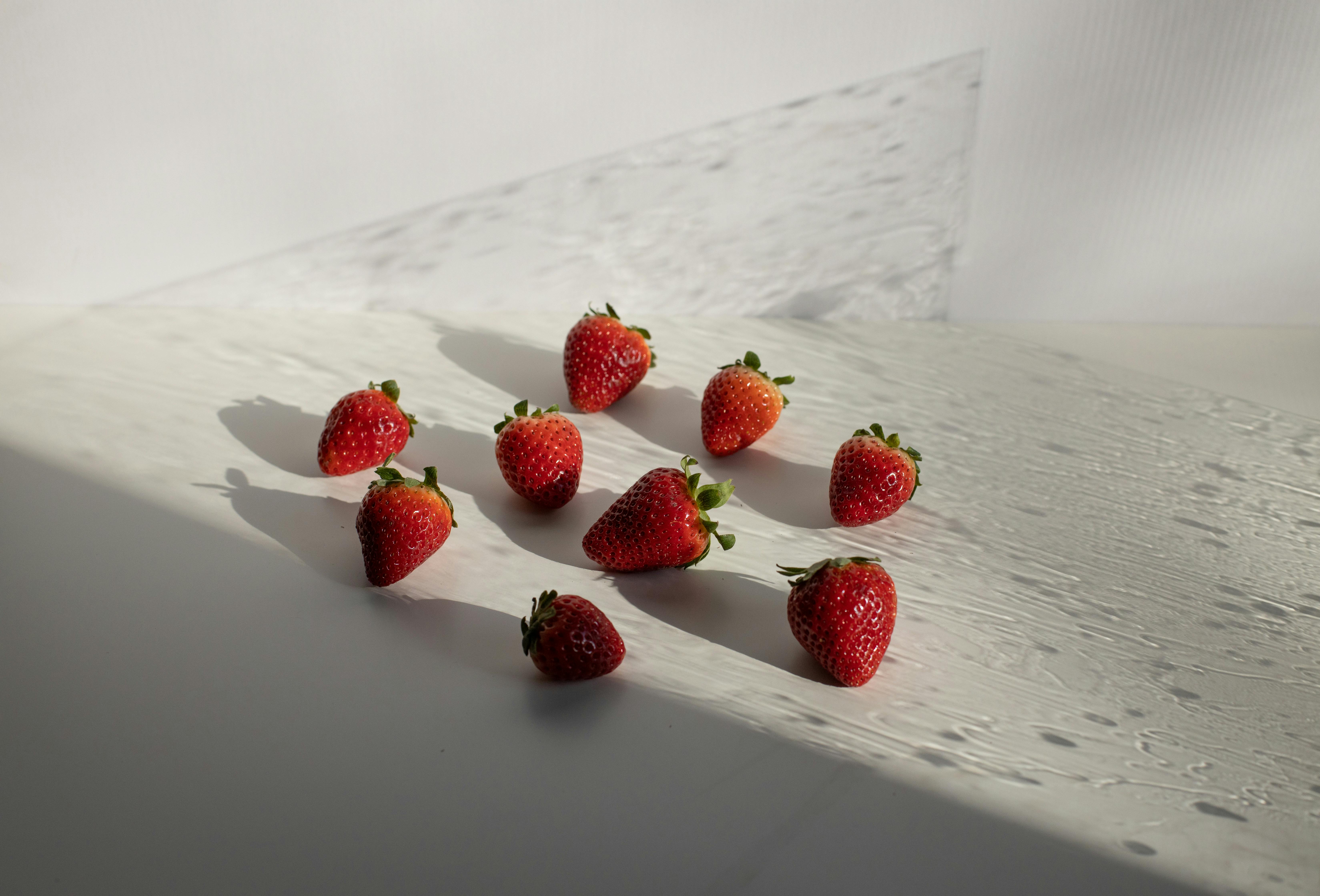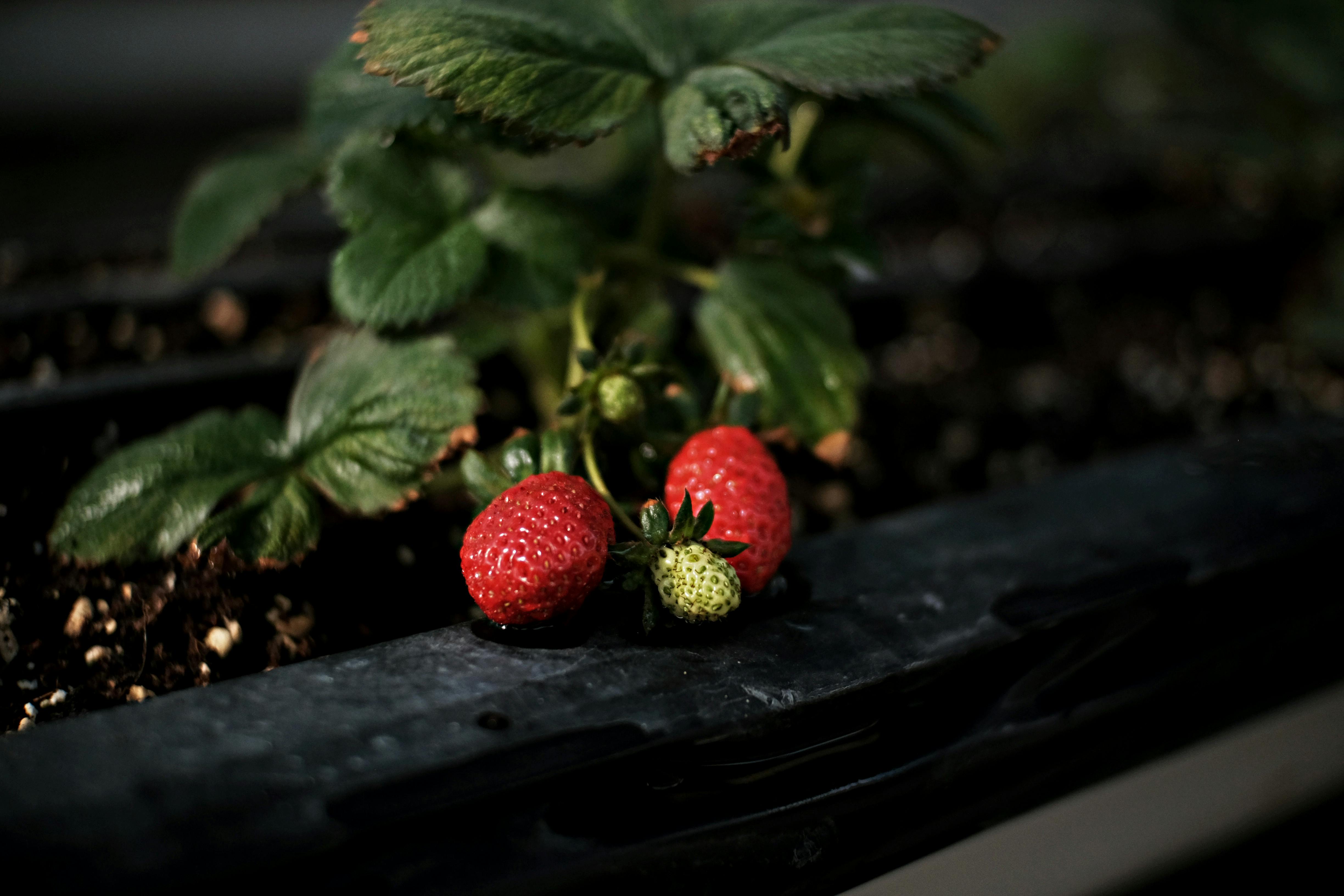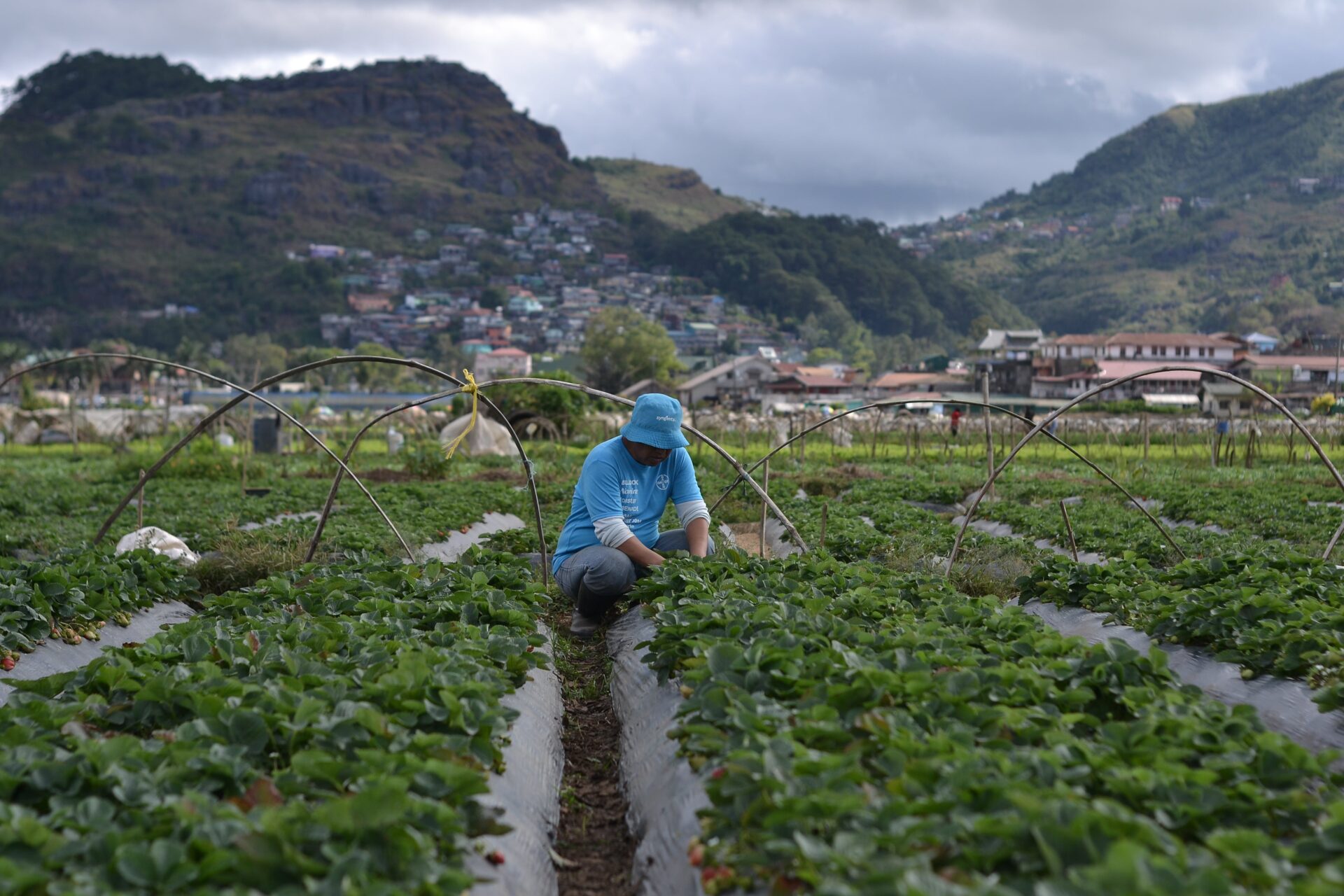Dividing strawberry plants is a great way to increase your crop yield and create a larger planting area. It also helps to keep the plants healthy by removing any crowded or unhealthy roots. With a little bit of effort, you can successfully divide and transplant your strawberry plants so that they produce an abundant crop of sweet, juicy berries. In this guide, we will go over the steps that you need to take to divide and transplant your strawberry plants successfully.1. Start by selecting healthy and disease-free plants. Make sure the plants have good leaf color, a strong stem, and are free of pests or disease.
2. Prepare a large container with potting soil and fertilizer.
3. Dig a hole in the soil large enough to accommodate the root ball of the strawberry plant.
4. Carefully remove the plant from its original pot and place it into the prepared hole in the container.
5. Use a sharp knife to carefully divide the root ball into 3-4 sections, making sure to keep as much of the root system intact as possible.
6. Plant each section in its own hole in the container, making sure that each section has an equal amount of soil around it for support.
7. Water each section thoroughly and cover with mulch or straw to help keep moisture in and weeds out.
8. Place your newly divided strawberry plants in an area that receives full sun for at least 6 hours per day and is well drained for best results!
Types of Strawberry Plant Divisions
Strawberry plants are typically divided into two main types: June-bearing and everbearing. June-bearing varieties produce a single crop of large, sweet strawberries that ripen in late spring or early summer. These varieties are often planted in the fall and require a period of cold dormancy in order to produce a full crop. Everbearing varieties, also known as day-neutral varieties, can produce multiple smaller crops throughout the growing season. They are more tolerant of temperature variation and can be planted in either the spring or fall in most climates.
In addition to these two main types, there are also many hybrid cultivars available which combine characteristics from both June-bearing and everbearing varieties. Hybrids tend to produce larger fruit than everbearing cultivars and may have greater disease resistance than traditional June-bearing types. Hybrid strawberry plants can be planted throughout the growing season for multiple harvests.
Another type of strawberry plant is the alpine variety, which is not as widely available as other types due to its small size and limited production. Alpine strawberries typically produce small, tart berries that ripen during mid-summer. They are ideal for container gardening or for small gardens where space is limited.
Prepare the Soil for Plant Division
Plant division is an excellent way to propagate perennial plants, and it’s also a great way to share plants with your gardening friends. When dividing plants, it’s important to prepare the soil for optimal success. For best results, be sure to loosen the soil around the plant and enrich it with compost or other organic matter. This will allow for better root development and easier division of the plant. Additionally, be sure to remove any weeds or debris that may be in the area. When dividing a plant, you want to ensure that each section has plenty of healthy roots so that it can thrive in its new environment.
To help make sure each division is successful, water the soil at least a day before you plan to divide the plant. This will help soften up any hard-packed areas of soil and make it easier to dig into when separating the sections of the plant. It may also be beneficial to add some additional compost or mulch around each section after planting as this will provide extra nutrients for growth and help retain moisture during dry periods.
Overall, taking time to properly prepare the soil before dividing a plant is an essential step in ensuring successful propagation. Loosening up compacted soil and adding organic matter will give your new divisions a good start in their new homes!
Watering the Soil Before Division
When it comes to dividing perennials, it is important to make sure that the soil is well watered before you begin. This will help ensure that the roots of the plants stay hydrated throughout the process and can help reduce stress on the plants. To properly water the soil before division, you should water the entire bed in which your plants are located. This will allow for a deep soak of all of your plants, so every single one is properly hydrated before you begin. Once the bed has been thoroughly saturated with water, you can then begin to divide your perennials.
It is also important to make sure that you are not overwatering your soil when preparing for division. Overwatering can lead to root rot and other issues with your plants, so it is important to ensure that you are not overdoing it when providing moisture for your perennials. To prevent overwatering, make sure that you are checking the moisture level of your soil before each watering session and adjust accordingly. If there is already a good amount of moisture in the soil, then there is no need to add more water.
By taking the time to properly water the soil before division, you can help ensure that your perennials stay healthy and happy throughout this process. Not only will this help keep them looking their best, but it can also help reduce transplant shock once they are replanted in their new locations.
Removing the Plant From the Ground
Removing a plant from the ground can be a difficult and time consuming task. It is important to take into account how large the plant is, as well as the type of soil it is in. If the soil is hard or clay-like, special tools may be needed to remove it. Additionally, if the plant has deep roots, extra care must be taken to ensure that all of them are removed.
The first step in removing a plant from the ground is to dig around the base of the plant with a shovel or spade. This will help loosen up the soil and make it easier to remove. Care should be taken not to damage any of the roots while digging, as this could cause damage to the plant later on. Once enough soil has been removed, it’s time to carefully lift out the root ball of the plant. If there are any large clumps of dirt that won’t come off easily, these can be gently broken apart with a shovel or garden fork.
It’s important to make sure that all of the roots have been removed from around and under the plant before attempting to move it elsewhere. If any remain in place, they could cause problems for new growth and development in its new location. After removing all of the roots, wrap them up securely in burlap or newspaper before transferring them elsewhere for replanting or disposal.
When replanting, it’s important to make sure that you replant at a similar depth as before and provide plenty of water so that your newly transplanted plant can establish itself in its new location. With patience and care, you can successfully remove plants from their original location without damaging them!

Separating New Plants From Old
When it comes to growing plants, many gardeners find that they need to separate new plants from old. This is especially true for annuals, perennials, and other types of plants that can become overcrowded or overgrown. Separating new plants from old plants can help keep your garden neat and tidy, and it can also help promote better plant growth. Here are some tips for separating new plants from old:
• Look for signs of overcrowding. If your garden is starting to look a bit cluttered, it may be time to separate some of the plants. Look for signs of overcrowding such as compacted soil, stunted growth, or tangles of roots.
• Check the roots. When you’re ready to separate the plants, take a look at their roots. If the roots have become tangled or intertwined with each other, it’s time to separate them so that they can each get their own space and nutrients.
• Use a sharp spade or shovel. To safely separate the plants without damaging them, use a sharp spade or shovel to dig around each plant’s root ball and gently lift it out of the soil. Take care not to break any roots in the process.
• Replant each plant in its own spot. Once you’ve separated the plants from each other, replant each one in its own spot with plenty of room for growth. Make sure that there’s enough space between each plant so that they won’t grow into one another again in the future.
Separating new plants from old is an important part of caring for your garden and keeping it looking its best. By taking these steps, you can ensure that your plants have plenty of room to grow and thrive without being crowded out by their neighbors!
Replanting New Strawberry Plants
Replacing existing strawberry plants can be a difficult task. When done correctly, however, it can help to ensure that your strawberry patch remains productive and healthy for years to come. The key to successful replanting is choosing the right location and preparing the soil for the new plants. Once you have selected a suitable site and prepared the soil, it’s time to plant your new strawberries.
When selecting a site for your new strawberry plants, make sure it is well-drained and has plenty of sun exposure. Make sure the site is not in an area that floods or gets waterlogged after heavy rain. If possible, choose a location that has access to irrigation or that is close to a water source such as a pond or stream.
Once you have selected your planting location, prepare the soil by tilling it and incorporating organic matter such as compost or manure. This will help improve drainage and provide essential nutrients for your plants. Make sure to remove any rocks or debris from the planting area before you begin planting your new strawberry plants.
When you are ready to plant, dig holes for each plant that are slightly larger than the root ball of each plant. Place each plant into its hole and gently firm down the soil around it so that it is stable and secure. Water each plant thoroughly after planting them and then keep them moist until they become established in their new home.
By following these steps carefully when replanting your strawberries, you can ensure that they will grow strong and produce abundant fruit for years to come!
Watering New Strawberry Plants Properly
Watering new strawberry plants is a key part of their successful growth. It’s important to get the balance between too much and too little water right, to ensure that your plants stay healthy and thrive. To do this, you’ll need to consider the type of soil you have, the weather conditions, and other factors that can affect how much water your plants need.
One of the most important things to remember when watering new strawberry plants is to make sure they get enough water without becoming over-saturated. The amount of water they need will depend on the type of soil you have – sandy soils tend to require more frequent watering than clay soils. You’ll also need to consider the weather conditions – if it’s hot and dry, your plants may need more frequent watering than if it’s cool and wet.
When you first plant your strawberries, give them a good deep soak with plenty of water. This should be done every few days for at least two weeks or until the roots are established. After this, watering should be reduced but still done regularly – about once every week or two depending on the weather conditions.
It’s also important to make sure that you don’t over-water your plants as this can cause root rot and other problems. If you’re not sure how much water to give them, use a soil moisture meter or stick your finger into the soil – if it feels damp then it probably has enough moisture already.
Overall, it’s important to find the right balance between too much and too little water when caring for new strawberry plants. Consider the type of soil you have, as well as the current weather conditions when deciding how often and how much to water them. With proper care and attention your strawberry plants should thrive!

Conclusion
Division of strawberry plants is a great way to increase your harvest of strawberries. It’s easy to do and can be done in a few steps: First, identify the crown or main body of the plant. Then, use a shovel or spade to dig around the plant and gently pull it out of the ground. Use a sharp knife or scissors to divide the crown into sections, making sure each section has viable roots attached. Plant each section in slightly moist soil about 10-12 inches apart and water them thoroughly.
If done properly, division of strawberry plants can be an easy and effective way to increase the number of plants you have. It also allows you to share with friends and family so everyone can enjoy fresh strawberries in their gardens!
With division, you’ll soon be able to reap the rewards of having multiple strawberry plants with lots of delicious fruit!



